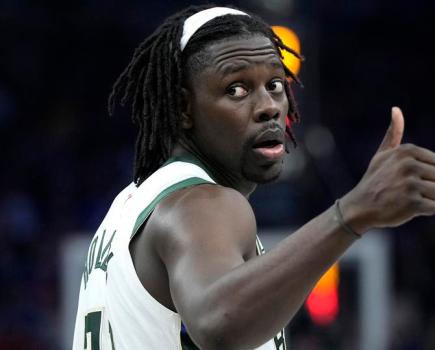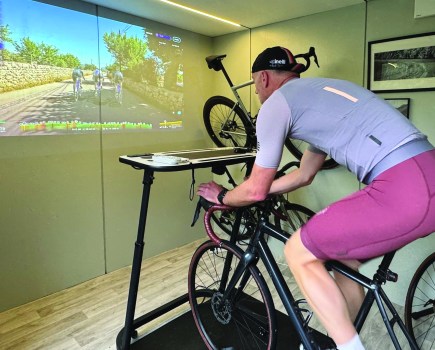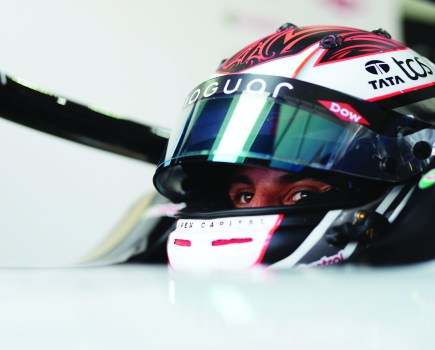Providing a pathway from the student union to the Super Bowl, the NFL Academy is the place to be for aspiring UK-based American footballer players. Sam Rider pads up to find out more.
Despite American football being more popular than ever in the UK, on the field just five Brits have ever won a Super Bowl. But now, via the 2019-formed NFL Academy, there’s a clear pathway from these shores to the gridiron across the Pond.
Key aims of the NFL Academy
“We’re here to eliminate average,” head coach Steve Hagen tells me, while overseeing the Academy’s bleary-eyed 6am weights session. With more than 38 years of American football experience, including 11 as assistant coach for the New York Jets and Cleveland Browns, the man known simply as Coach has been drafted in by the NFL to orchestrate proceedings alongside Lamonte Winston, head of NFL Academy UK.
“We’re trying to give these guys a real chance to play football in America,” the 62-year-old continues. “Before, they were training three times a week. But Americans practise five times a week. If we continued like that, we’d never catch them. So I came over to install what American football really looks like and feels like.”
The unifying aim of the NFL Academy is a worthy one. Led by the National Football League, it’s designed to use American football as a means to carve out life-changing opportunities for young people around the world. Each September, the Academy welcomes students aged 16 to 19, cherry picked for their athletic potential, to undergo three years of intensive training alongside their education – in the gym, on the field and in the classroom.
On Hagen’s cue, we’re told to fall in with the players as they’re led through a dynamic warm-up of walkouts, press-ups, ‘world’s greatest stretches’ and prisoner squats by director of performance, Chris Bear. Supposedly said players are still just teenagers, but the hulking, supersized men setting themselves about the weights room floor would fool most club doormen in the local student bars.
The setting is suitably impressive, too, relocated from its original home in Southgate College to the high performance setup at Loughborough University: a sporting centre of excellence that has honed the craft of Olympic greats Seb Coe and Steve Backley, along with Paula Radcliffe and Baroness Tanni Grey-Thompson.
Physical conditioning at the NFL Academy
“To put it simply, we’re in the business of closing gaps,” Bear explains, while stalking the room, cajoling his charges to keep their standards high. “On day one we get our guys in, we profile their strengths and weaknesses, we identify where the gaps are, we close those gaps. Relentlessly. Day in, day out.”
Today, after a four-week pre-season block building into the Academy’s first of three matches, that involves the players lacing up their best gym shoes and being put through a series of trap bar deadlifts, barbell pulls and landmine throws to develop NFL-worthy might and muscle.
Bear sees his role as that of building the hardware upon which the NFL coaches can run sophisticated, high-quality software: “American football players work within such fine margins of deception to create space, with such intricate phases of play at extremely high speed – that’s what makes it such a fascinating sport.”
A major tenet of today’s American football workout is to develop something Bear calls “acceleration momentum”. Essentially, he says, this is the combination of a player’s size, or mass, with their acceleration: “If you have a big person who can move quickly, you have a high acceleration momentum, and that should lead to greater collision dominance.”
That means a truck load of upper-body hypertrophy work, drawing on high-volume drop sets and painstaking eccentrics, coupled with hip extensor exercises – like trap bar deadlifts and landmine throws – to develop full-body, sport-specific acceleration and power.
The session itself is fast and frantic, but amid the crashing of weight plates and exuberant high fives, it’s equally measured. To start, the players record countermovement jumps to chart their best vertical leap, and the workout ends with a set of Nordics to test eccentric hamstring strength – each a tell-tale sign of strength imbalances or heightened injury risk.
The students aren’t spoon-fed either. Each is given a level of autonomy and accountability to get their work done. “We don’t have a lot of time,” Bear says. “Two to three years max, up against people who’ve been playing this sport their whole lives. We’re playing catch up with the US, so every day we work them as hard as we can, to squeeze out as much as we can.”
Of course, playing catch up is somewhat easier when you can run faster, jump higher and stand taller than most of your peers. “Genetically they are all very gifted individuals,” Bear continues, nodding to one man mountain in particular: “Thompson Umukoro, he’s from Nigeria, he came through our African programme, he’s one of the strongest athletes I have ever come across in my entire life – across rugby, swimming, you name it. Not so much by way of the gym, but his parents have gifted him some incredible genetics. He’s in impeccable shape.”
For Luke Yau Gayle, another towering defensive line who has just accepted the offer of a college scholarship from Buffalo Bulls in New York state, that juice is definitely worth the squeeze. In January, he’ll fly over to the east coast to study and train as part of the 2023-24 college intake. The goal, he says, is to emulate Efe Obada, who, after just five amateur games for the London Warriors, was recruited by the Dallas Cowboys in 2014. The defensive line went on to star for the Carolina Panthers and Buffalo Bills, earning cult status among the Academy hopefuls for sacking legendary quarterbacks Tom Brady, Aaron Rodgers and Matt Ryan.
The NFL Academy and life-changing opportunities
Another British success story in the NFL would rubber stamp the work being done by the NFL Academy, but their reach extends far beyond these isles. The 2023-24 cohort, for example, is made up of 62 students from 13 countries, including Sweden, Italy, France, Czechia, Belgium, Finland and the Netherlands, and Nigeria.
One former graduate, we’re told, has been able to support their entire family back home in Lagos, due to the money earned from sponsorship deals earned alongside a college football scholarship. And since its inception, the Academy can point to 25 alumni playing college football in the US, nine playing Division I football, and 125+ Division I offers shared between 20 students.
This year, the standout name is that of 18-year-old Daniel Akinkunmi. The 6’ 4”, 305-pound offensive lineman is weighing up scholarship offers from more than 30 US colleges. “Without the Academy,” he says, “I would never have had the platform or profile to get all these offers. From here, the end goal is to complete three years at college, declare for the draft, be a first rounder, get picked, come back to do my masters and then have a great career in the NFL.”
Akinkunmi is undoubtedly a star on the rise. But, as Lamonte Winston is keen to stress when we swap the gym for the classroom later that morning, the Academy’s influence extends far beyond the four white lines of the football field.
“Our goal is college scholarships. But we’re an elite football educational academy and what you learn in here will set you up for success when your football eventually goes flat,” he says, holding a deflated pigskin aloft to illustrate his point. At the Academy, leadership is a key buzzword. “Leadership is about influence. Nothing more, nothing less,” Winston continues. “But leadership develops daily, not in a day.”
Life after football
Winston is joined at the front of the class by Jason Bell, a former NFL cornerback and high-profile pundit, whose career was cut short by injury; and Toshane Boyce, a promising running back from the Academy’s first cohort in 2019, whose progress was cruelly cut short by the Covid-19 pandemic.
“At first, I didn’t really know what I was doing,” he later explains. “Coming from the track, my element was speed. I turned up to an American football open day in North London and ran a 4.61 40-yard dash. At 16, that’s pretty fast.” From 1,500 hopefuls, Boyce made it to the final 80 and earned his place among NFL Academy’s inaugural intake.
When football eventually returned in 2021-22, he quickly made up for lost time. “As soon as I touched the ball I scored,” he says. “I was the first player in the Academy to score three touchdowns in one game and from there everything changed. Next game I scored two, last game I scored one.”
Despite missing out on the chance to play college football Stateside, Boyce now acts as an ambassador for the Academy, introducing flag football to schools around the country and overseas, while also mentoring aspiring graduates. “The Academy changed my life,” he says. “I want to remind guys that even if they don’t make it to the next level, there are still other options and opportunities within the NFL. Being able to inspire and motivate the next generation is really powerful. I’ve been there and done that, and once you’re in the NFL Academy, you’re always in the NFL Academy.”
With Boyce’s reminder of the cutthroat nature of professional sport, we’re next directed to Loughborough University’s Elite Athlete Centre, to refuel for the afternoon’s exertions.
How much do American football players need to eat?
Feeding 62 voracious teenage lads three times a day would test the credentials of most canteens, but when those hungry mouths are playing catch up with US counterparts blessed with a natural size and weight advantage, a unique form of problem solving is required.
“The main barriers to overcome are the costs of quality protein just to hit the players’ calorie intake,” explains Academy and Loughborough Sport performance nutritionist, Matt Haskell. “Some of our players are pushing 130kg, so they need to consume well north of 4,500 daily calories, just to keep up with their metabolisms.”
A double serving of pesto chicken with penne pasta, plenty of steamed green veg and a side of chilli con carne seems the order of the day. The players are also encouraged to tuck into the salad bar and load up on fermented foods, such as kimchi and sauerkraut, to aid digestion and boost immunity.
Haskell tells me that along with the best high-quality protein powders, jelly is another little-known superfood the team rely on, thanks to the abundance of protein found in gelatin in the form of collagen: “For players prone to tendon strains or recovering from a ligament injury – which can be especially common in American football – increasing intake of collagen, in supplement form or with their diet, can provide a small percentage win to accelerate recovery.”
With hunger satiated – for now – the team heads for a video analysis session, split between offence and defence, before taking to the field to put these newly learned plays into practice.
Eliminating average
Up close and personal, you start to realise the sheer violence of the sport, one that requires players to don nearly 6kg of protective gear from head to toe. It’s noticeable how long the students spend on the field, too, compared with the short, sharp gym workout earlier.
“They’re not constantly in motion like you see in soccer or rugby,” S&C coach Chris Bear says, talking us through each phase of play. “American football is very much an intermittent, high-explosive sport, conducted over a long period of time. It’s like a 4D game of chess – just played with very, very large humans.”
It’s this brutality of the sport, its gladiatorial nature, that Coach Hagen believes makes it so unique: “I just think it’s a great sport for young people. It brings that lion out in them. It’s a very violent sport. You have to train all year round. All those weights, all that running. Then you find out who you are real quick, because you’re going man against man, 11 on 11, in public. There’s no hiding.”
For Hagen, standards simply can’t afford to slip. “For me, success would be to see one of these guys getting a scholarship to go play. But it’s hard, so hard. How many will make the grade and earn a Division I Power Five scholarship? Maybe one or two.”
That’s why, he says, returning to his mantra, “we’re here to eliminate average in all that we do. Because average won’t get you to where you need to be. Average won’t cut it. The world is competitive. In our sport, it’s super competitive. It’s survival of the fittest. And average men don’t survive in this sport. Not one minute.”
It’s something he won’t tire of telling the NFL Academy students, but, he insists, they should also have fun along the way. “There’s enough pressure in the world,” he says, with a wry smile. “That’s our mindset. That’s what I tell these guys. No excuses, no explanations, let’s go.”
Five British players who have won the Super Bowl
Osi Umenyiora
Super Bowl XLII and XLVI
Born in Golders Green, London, to Nigerian parents, he moved to Alabama aged 14. After two years of high school football, the defensive end was offered a scholarship by the Troy Trojans, then drafted by the New York Giants, ultimately winning two championship rings in 2008 and 2012. Holds franchise record for most sacks in a single game.
Marvin Allen
Super Bowl XLIII
Born in Dorking, Surrey, the wide receiver made the less-trodden route to the NFL via Frankfurt Galaxy, Rhein Fire and Amsterdam Admirals. Signed by the Pittsburgh Steelers in 2006, he was on the team sideline during the Steelers’ narrow Super Bowl victory in 2009.
Scott McCready
Super Bowl XXXVI
Another wide receiver with an unlikely route to the NFL final, McCready played college football in South Florida and became the first Brit to win a Super Bowl, back in 2002, as part of the practice squad for the New England Patriots.
Lawrence Tynes
Super Bowl XLII, XLVI
Scottish-born placekicker Tynes is the only player in NFL history to kick two overtime game-winning field goals in the playoffs. A former Troy State college footballer, he twice earned the New York Giants a shot at the grand prize, winning a ring in 2008 and 2012.
Jay Ajayi
Super Bowl LII
Following the Umenyiora template, Ajayi was born in London to Nigerian parents, moving to Maryland aged seven. A stellar college football record as a running back at Boise State led to five seasons with the Miami Dolphins and Philadelphia Eagles, earning the latter their first Super Bowl in the Eagles’ franchise history in 2018.






